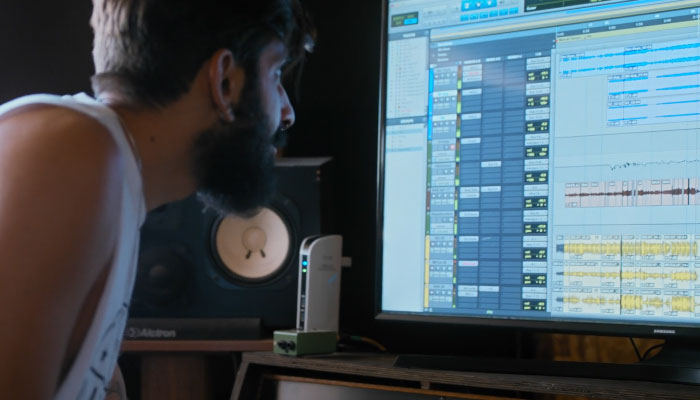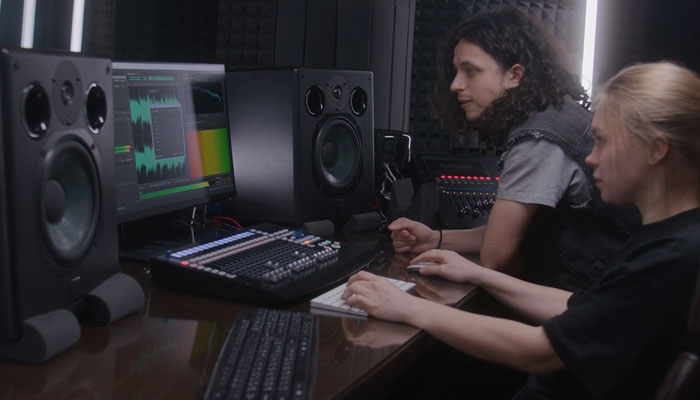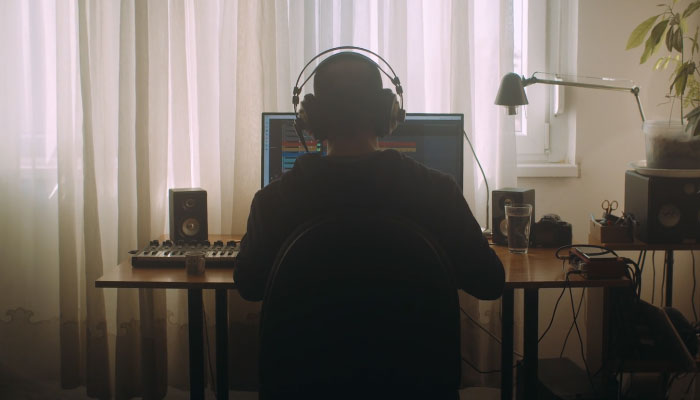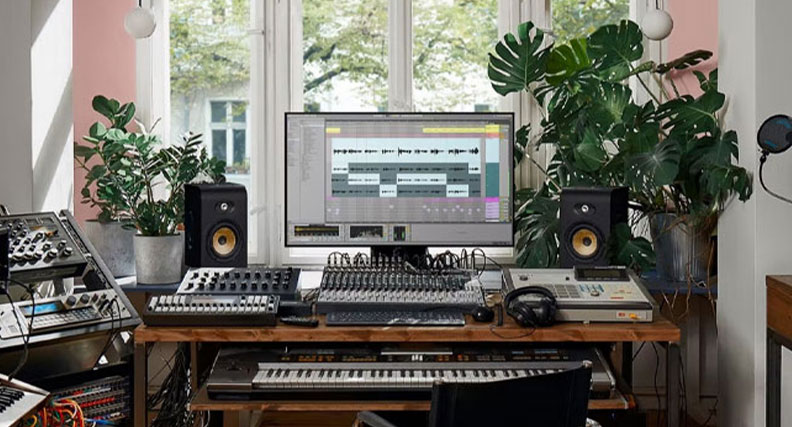
There are many different DAWs (digital audio workstations) available on the market for music production and podcast recording, from freeware to expensive studio-quality offerings. Specifically, Ableton Live is a great DAW to work with.
However, as with all DAWs, although there are plenty of features and tools available, expanding the range of what you can do with your DAW is advantageous.
And there are plenty of VST (virtual studio technology) plug-ins available for Ableton Live to suit every project and budget, whether music production or podcasting.
With CrumplePop’s suite of audio restoration software, any DAW can be significantly enhanced and even the worst audio can be given a whole new lease of life. With both free plug-ins to use and a paid tier for the rest, there’s something for everyone.
However, there are plenty of other free and paid plug-ins that will expand what Ableton Live can do. So let’s check them out!
Free VST Plugins for Ableton Live
Native Instruments Kontact 7

Native Instruments has a practically unparalleled name in the music industry when it comes to plug-ins, and the free Kontact 7 package gives you a good idea of why.
If you’re looking to expand the range of virtual instruments you have available then you’re definitely in the right place. There are hundreds of instruments available here so whatever your creative desires you’ll find something to match them. And there’s a huge range of effects, from light vocal tweaks to huge guitar rigs.
You can also upload your own samples into the software, so you’re not restricted by what Native Instruments want you to use. Organizing everything into libraries is also easy, and the revamped front end makes using the plug-in and finding what you need much easier.
Native Instruments have an industry-wide reputation and Kontact 7 only adds to their reputation.
Pros:
- Amazing range of instruments for a free VST plug-in.
- Huge range of effects, all of which are excellent in terms of quality.
- UI improvements make use easy.
Cons:
- The whole library is 40Gb in size, which isn’t small.
- Resource-heavy.
iZotope Ozone Imager
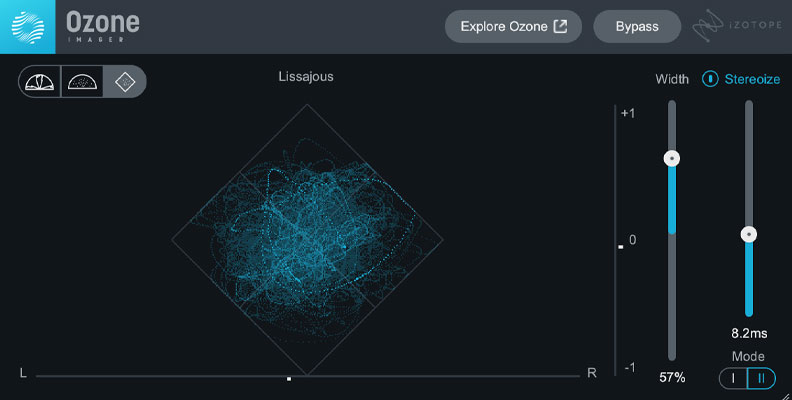
Mixing and mastering can be a complex process, so anything that helps with it is a real boon. The Ozone Imager from iZotope does just that and the Imager allows you to reduce or expand the stereo width of your recording, whether on individual tracks or the entire recording.
You always want to make sure there’s enough space on your track so all the instruments and vocals can be clearly distinguished rather than smearing into each other. By adjusting the tracks with the Imager you can ensure that everything retains its clarity.
You can also adjust mono recordings to stereo (without drenching it in reverb or artificially doubling the original recording) and you can adjust and control specific frequency bands as well as the entire track. That means even within one instrument or voice you can adjust the harmonics to ensure the clarity you need.
Mastering and mixing isn’t the glamorous end of music production but the Ozone imager makes things just that little bit easier for you.
Pros:
- Extremely powerful, considering it’s free.
- Easily as effective as many paid products.
- Easy-to-understand visualizations.
Cons:
- Many will already have similar products.
- Not the most detailed controls in the world, though for a free piece of software, it’s hard to complain too much.
Graillon 2
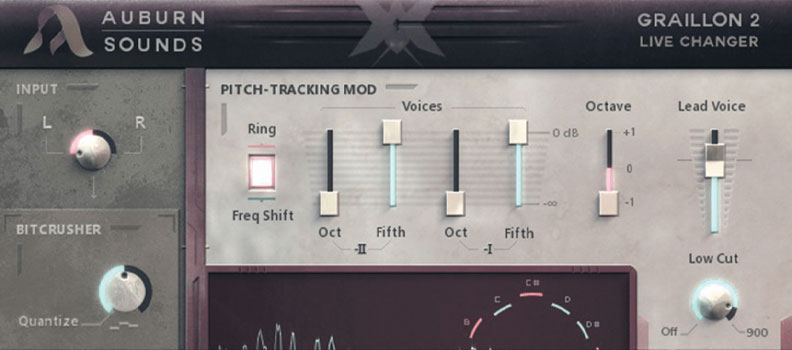
Nobody sings perfect first time, every time, so for those moments when a note or two goes adrift, autotune is a life-saver. But whether it’s fixing a little studio wobble or going for a deliberate autotune effect, Graillon 2 will suit your needs.
A clean, simple-to-understand interface confronts you when you launch the plug-in, and using it is as easy as could be. Simply load up your vocals, choose the note you need to pitch your vocal to and define how much pitch correction you want to apply.
There are other controls, including the ability to mix wet and dry tracks for additional control or contrast, and there’s quantize modes available too so you can have everything sounding smooth and natural or an intentionally artificial hard-tuned effect. The sound quality when going for a natural feel is remarkable for a free plug-in — you’d never know autotune had been used!
Whatever autotune effects you need, the Graillon 2 will have you covered.
Pros:
- Remarkably smooth-sounding, natural autotune.
- Hard-tuned effects are also incredibly effective.
- Easy to use, even for beginners.
Cons:
- There’s no shortage of autotune options available.
Valhalla Supermassive
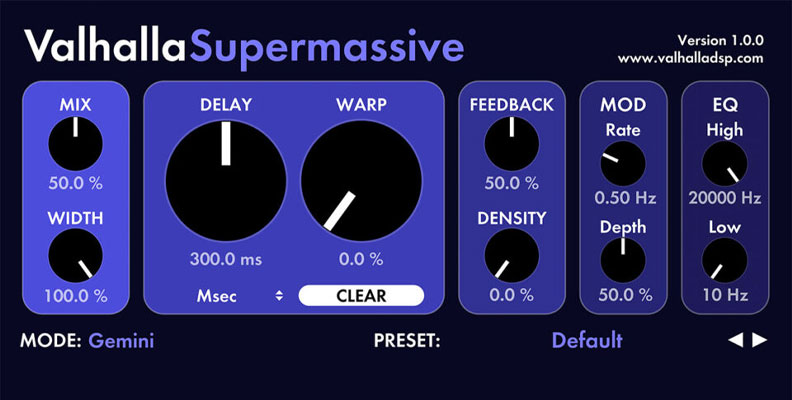
If you’re in love with reverb and delay then you need to get Supermassive in your plug-in collection right now.
There’s no shortage of delay and reverb plugins available but Supermassive stands out from the crowd. You can produce endless varieties of reverb and delay, swirling around the listener or echoing out to infinity.
There’s 14 different reverb plugin settings included with Supermassive, all named after constellations, which can create vast effects. Whatever you need to create in terms of soundscapes is here.
But it’s not all about size, and the settings can add detail, nuance, and subtlety to your sound. The amount of control is remarkable, and you can use Supermassive to model different types of room environments as well as for effects.
However you want to model your sound, Supermassive will have the answer.
Pros:
- Amazing range of delay and reverb for a free plug-in.
- Sound can be absolutely vast!
- Loads of control are available so scaling your sound and sound design is simple.
Cons:
- Very easy to get carried away with!
Fresh Air
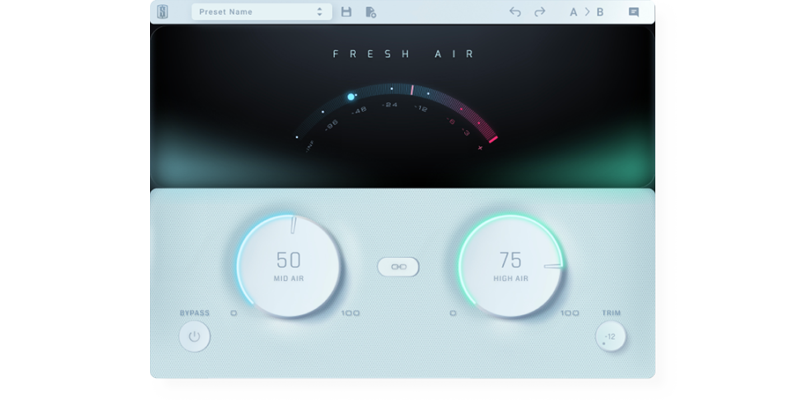
Sometimes, plug-ins solve a problem you didn’t even realize you had. Fresh Air, from Slate Digital, does just that. It’s a straightforward plug-in that allows you to add presence and space to your audio —literally adding “fresh air”.
If you have vocals that need brightening, or in the course of cleaning up audio things have become a little murky, then Fresh Air is the solution. It works exceptionally well on vocals, but it’s not restricted to just voice — you can add a bit of sizzle to cymbals or some space to guitars.
It will even add to synth lines and it can make anything sound more present in a mix without simply dialing up the gain.
Making everything sound cleaner, brighter, and more present has never been easier and Fresh Air makes achieving that an absolute doddle. It might not seem like much but there’s real power in this plug-in.
Pros:
- Can make even the murkiest of recordings sound bright and fresh.
- Works equally well on vocals (both singing and spoken for podcasts), instruments, and synth lines.
- Simple to use, easy to understand.
- Full disclosure — I use this plug-in on every episode of the podcasts I produce!
Cons:
- Installation is a pain and requires iLok (but it’s worth the brief initial headache).
- It’s easy to overdo things so some restraint is required.
Paid VST Plugins for Ableton Live
CrumplePop Audio Restoration Suite $29.00 p/m Pro tier, $599 perpetual license

No matter how hard you try, audio issues can occur and when they do you need a reliable piece of software to ride to the rescue. Enter, then, the CrumplePop suite of audio restoration software.
Covering a range of different audio problems, the CrumplePop suite can turn even the worst-recorded audio into something sounding sweet, clean, and pure. Whether you pick up accidental traffic or wind noise while recording out in the field or need to deal with hum and hiss in the studio, you'll find something to save your day.
And now CrumplePop plugins also come in their own, standalone, app so you can apply multiple plugins simultaneously to balance the effects against each other and ensure your audio always sounds perfect.
Bad audio doesn't need to be a nightmare any more thanks to CrumplePop
Pros:
- Professional-grade audio restoration.
- Wide range of plugins to cover most eventualities.
- Unmatched quality.
Cons:
- Can be resource hungry when running many instances.
Hear It For Yourself
Advanced audio AI removes noise and boosts your vocal quality.
Toggle it on/off to hear the difference.
Remove Wind
Remove Noise
Remove Pops & Plosives
Level Audio
Remove Rustle
Remove Echo
Remove Wind
Vengeance Avenger $249.99
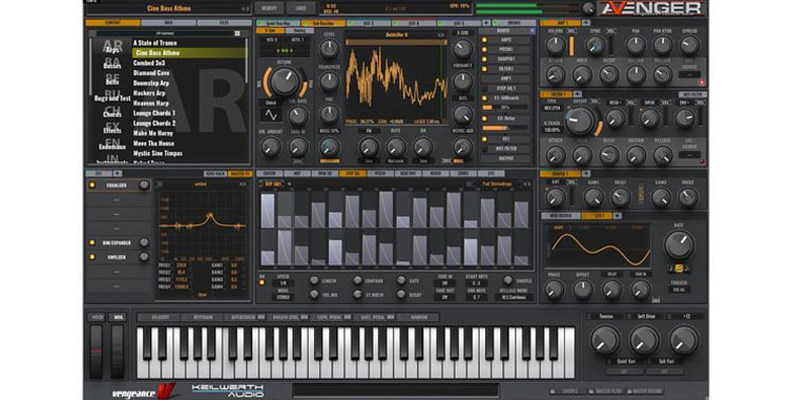
The Vengeance Avenger might sound like the latest Marvel movie but it’s an incredibly versatile, detailed synthesizer plug-in. It offers a range of eight oscillators so you can shape your sound pretty much any way you want so sound designers can have a field day. This gives the synth a pretty much infinite range of sound and layering your own samples is easy too.
There are plenty of effects on offer too, with arpeggiators, filters, and modulation so you’ll never run out of things to do with your sound. And there’s even a drum sequencing function that lets you run up to 16 bars worth of percussion.
A module like this really is worth getting your hands on — the ability to sculpt your sound has never had so much potential.
Pros:
- Unlimited sound.
- Surprisingly light on system resources.
- Easy to expand.
Cons:
- Confusing layout for newcomers.
- 16-bar drum sequencing is better than nothing but still a little limited.
Slate Digital Virtual Mix Rack - All Access Pass $14.99/mo
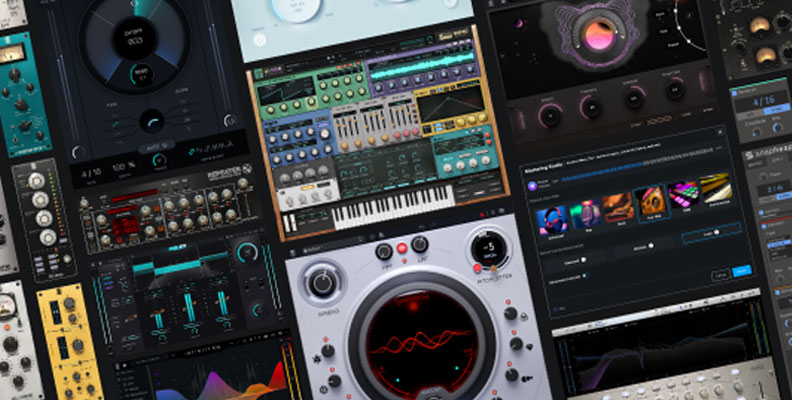
While there’s a huge amount of material on offer in the All Access Pass, the Virtual Mix Rack distinguishes itself as one of the best things Slate Digital has ever produced.
There’s a whole collection of compressors, pre-amps, EMS, and more to satiate your every production desire. If you want your sound to become warmer, more natural, and more analog then even just opening the plug-in will have this effect.
There’s loads of settings to enjoy and plenty that can be done to customize and modify your sounds. The display is clear and uncluttered despite containing a plethora of different effects and sound processing boxes.
The sound here is definitely analog — everything feels old-school and warm. The sound modeling is fantastic, the range of effects impressive, and the sound quality remarkable.
As a one-stop shop for music producers looking to have a huge range of effects easily to hand and with great-quality, industry-leading sound the Virtual Mix Rack is a great plug-in to have.
Pros:
- Everything, everywhere, all at once! A great range of free plug-ins.
- Recreation of analog sounds digitally is amazing.
- Analog emulating soft synthesizer included in the package.
- All Access Pass gives access to a vast range of other software.
Cons:
- No free version or trial to check out.
Roland Cloud Lifetime key $149.99 or monthly Core, Pro and Ultimate tiers
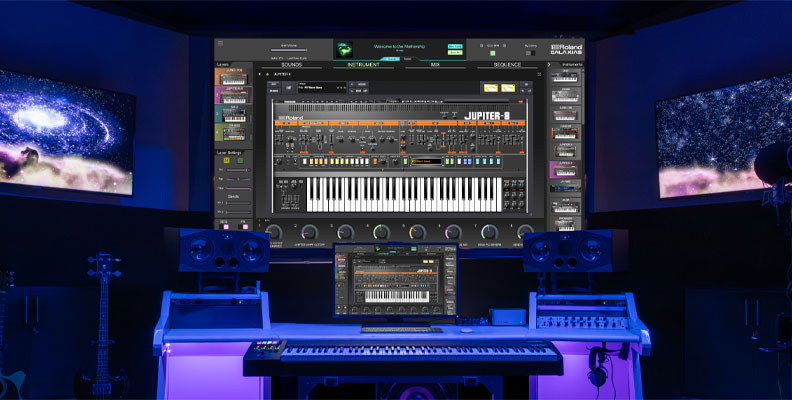
When it comes to creating drum sounds and defining genres, few names carry as much weight as Roland. Their range of synths and drum machines defined techno and hip-hop and are still much sought-after today.
Fortunately, the Roland Cloud subscription service gives you access to all those classic sounds without having to pay for prohibitively expensive hardware. There’s a huge range of synths on offer here, from the classic TR-808 to the Jupiter 8.
Whatever classic sound you want to recreate, you can do it here. Each synth works independently of each other and the quality of the virtual instruments is unsurpassed. The volume of sound creation tools is vast— just exploring them all is a task in itself.
But if you need that classic Roland sound then there’s only one place to go — here.
Pros:
- Huge array of classic drum machines and synths.
- Unmatched sound quality.
- Free 30-day trial available.
Cons:
- So much to play around with, you might never get started on your actual project.
Valhalla DSP $50.00 per plug-in, with a few free ones also on offer.
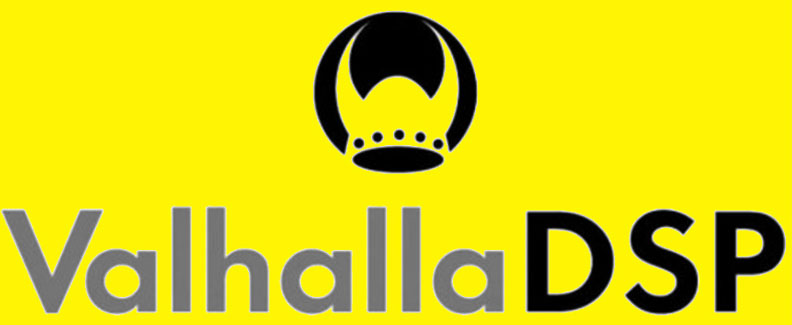
Valhalla has always produced great-quality plug-ins. But fun has always been part of the equation too and the range of plug-ins available is simply great to play around with to see what kind of effects you have generated.
For example, the Valhalla Delay creates a masterful range of delays, echos, and reverbs, far beyond what most plugins can achieve. Shimmer makes everything sound ethereal and beautiful, adding charm and character. And the Uber Mod — well, it does a whole host of flanging, chorus effects, and more that just needs to be experimented with to be understood and enjoyed.
The range Valhalla has isn’t extensive but the quality of the plug-ins they produce is unquestionable. Whether you choose to go for a paid plug-in or experiment with one of their free ones to get a feel for what they can do, you really can’t go wrong.
Pros:
- Amazing, professional-quality sound.
- Reverb plugin never sounded so good.
- Simply great to fun to use and play around with.
- Easy on system resources.
Cons:
- Expensive, even given there’s a couple of freebies.
Fab Filter Pro Q-3 $464.25 as part of the Mixing bundle
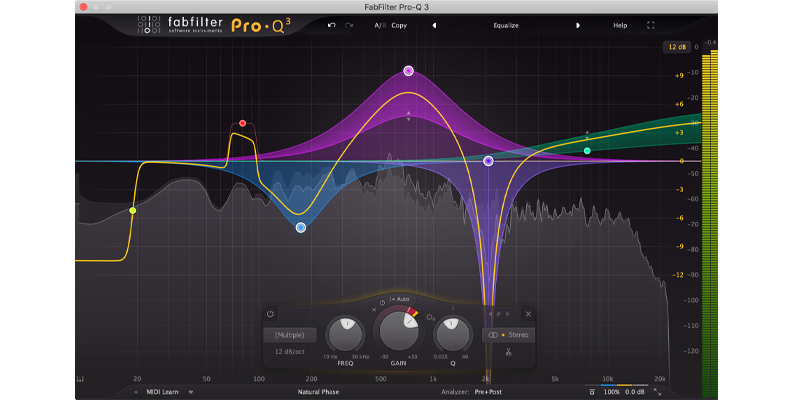
Fab Filter always produces great-quality plug-ins and the Pro Q-3 lives up to their reputation and then some.
The Pro-Q is an EQ plug-in and, unlike many similar plug-ins, really stands out from the crowd. It’s simple, intuitive, and easy to use and the results are fantastic. It’s easy to balance sound on either an individual track or on a master track.
There’s a 24-band dynamic graphics equalizer that allows changes to the audio signal that can either be extremely subtle or vast and all-consuming. There’s a whole host of filter shapes and adjusting sound has never seemed so effortless.
The design is intuitive - this is one area where a lot of EQ plug-ins fall down but it’s clear that real attention to detail has been paid here. That makes working with the Pro Q-3 an absolute dream.
Whatever your EQ needs are, the Pro Q-3 will be up to the task. And the rest of the software included in the mixing bundle is just as great!
Pros:
- Best-in-class EQ-ing software results in great sound.
- Invaluable tool for music production.
- Nice to see a company actually paying attention to the design.
Cons:
- Expensive, even though there’s plenty more in the Mixing bundle to enjoy.
iZotope RX10 Audio Editor Elements $39.60, Standard $199.50, Advanced $599.50
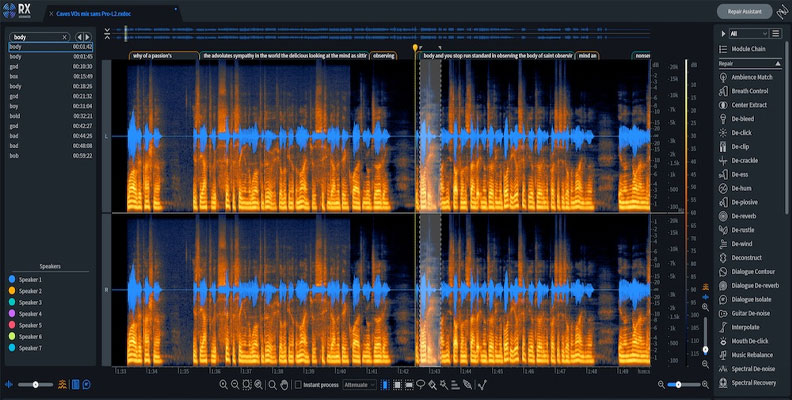
Audio can be damaged for any number of reasons. It could be old, stored on damaged analog storage systems, or simply not recorded in good circumstances. Whatever the reason, the iZotope RX10 Audio Editor is there to help save the day.
Repairing, extracting, rebalancing, and de-mixing audio are all tasks the RX10 plug-in can handle with ease. Separating instruments and vocals has become simpler, and the Rebalance tool allows different levels of control over whatever vocals or instruments you have on the original recording. This means that you can re-master and adjust existing masters even after they have been mixed down.
You can also remove instruments from audio tracks altogether to create isolated vocals. Or if it’s the voice you want to remove and just leave an instrumental track behind then you can do that too. You can even alter the inflection of an individual word — it’s that powerful
There’s plenty of presets available so that even a newcomer to production can get up and running quickly and while there’s plenty of gradual control available, the presets are incredibly effective too.
The RX10 Audio Editor is a remarkable tool and adds a vast amount of flexibility to a producer’s arsenal. You really can’t go wrong with it.
Pros:
- Industry-leading audio repair.
- Spectral view is great.
- The ability to isolate dialog or vocals is unsurpassed.
Cons:
- System-resource heavy.
How to Add VST Plug-ins to Ableton Live
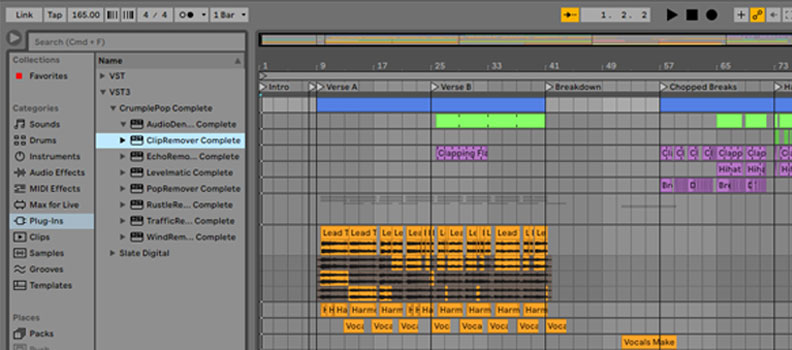
Installing external plug-ins in Ableton Live isn’t quite as straightforward as it is with some DAWs but once you have done it a couple of times, it will become second nature to you.
Firstly, launch the VST plug-in so its installer runs and the plug-in is installed on your system. Generally, plug-ins will come with their installers so they install easily on your system.
If there's no installer, you'll need to extract the plug-in from a .zip file and copy it manually into the file folder where plug-ins are installed on your computer. The usual locations for these are:
C:\Program Files\VSTPlugins (PC, 64-bit VST2 plug-ins)
C:\Program Files\Common Files`VST3 (PC, 64-bit plug-ins, VST3)
User/Library/Audio/Plug-ins (Mac)
When you have copied them to the correct folder, launch Ableton, go to the Options menu, and choose Preferences (PC), or go to the Live menu and choose Settings (Mac). This will open the Preferences dialog box.
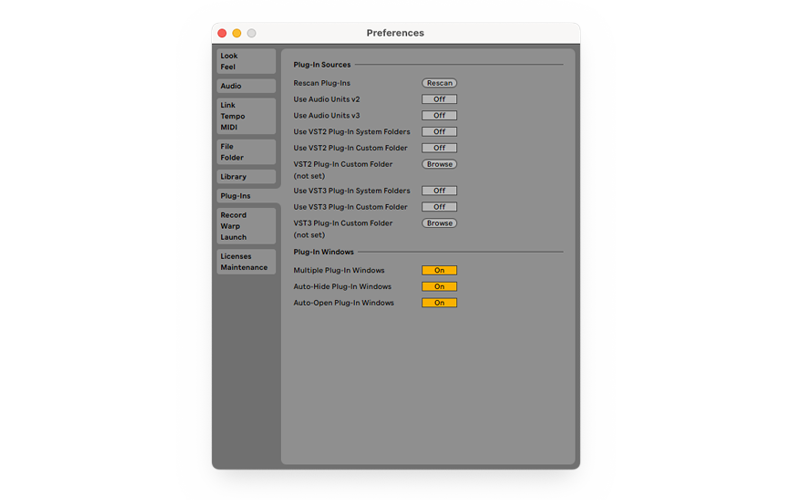
Click on the Plug-ins option on the left-hand side.
When this has been done you will need to tell Ableton where your VST plug-in folder is located on the computer. Ensure that you have selected the “User VST3 Plug-in Custom Folder” and “Use VST2 Plug-in Custom Folder” options so they are highlighted in orange. Then click the Browse button and navigate to the folder on your computer where the VST plug-ins are installed.
Once you have done this, click on the Rescan option. This will tell Ableton to search the system for any newly installed plug-ins. Once the rescan has completed any new plug-ins you have installed will then be accessible.
In the left-hand menu screen, you will see a Plug-ins section.
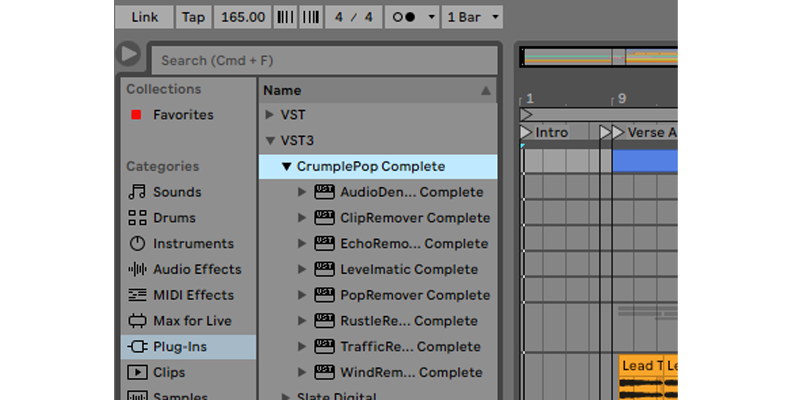
Click on this and the plug-ins you have installed will be visible and ready for you to use!
It is worth noting that not every VST version will work with every version of Ableton Live. Version Live 9 and below will only be able to access 32-bit VST plug-ins. Version Live 10 will only be able to access 64-bit VST plug-ins. Make sure that you are downloading and installing the correct versions of the software you have installed.
Conclusion
Ableton is a powerful DAW in its own right. However, there’s plenty you can do to expand its music production capabilities. The huge range of plug-ins available means you can build your recording studio with every effect under the sun and then some!
And with both high-quality free and paid plug-ins available, there’s more than enough for any producer to get stuck into. So get going!












